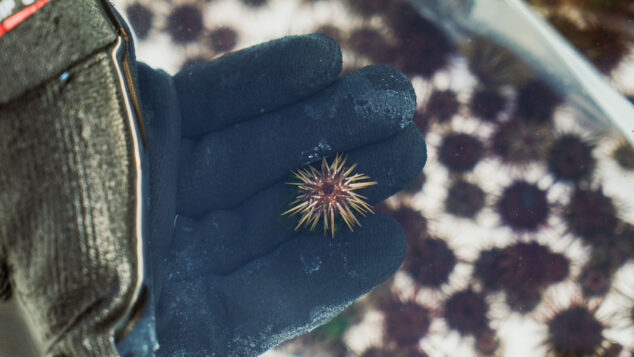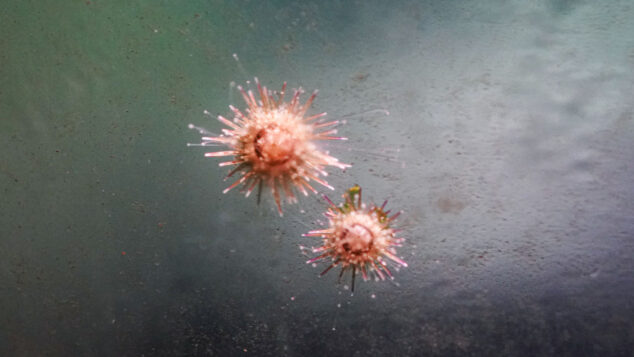The Ministry of Agriculture, Livestock and Fisheries and the Oceanogràfic Foundation have launched a pilot project aimed at the reproduction, breeding and reintroduction of specimens of sea urchin (Paracentrotus lividus) on the coast of the Valencian Community with the aim of strengthening the affected populations throughout the region.
Within the framework of the project, the Oceanogràfic Foundation technicians have managed to reproduce nearly 2.000 juvenile urchins, which have reached eight months of age. Of the total number of specimens bred at the Oceanogràfic in Valencia, 600 have recently been released into the waters of Dénia.
This is a pilot initiative that will also be joined by some fishing guilds interested in collaborating in the fattening and release phases of these marine animals.
With all this, the Oceanogràfic Foundation and the Ministry reiterate their commitment to marine conservation in order to contribute significantly to the recovery of sea urchin populations in the Valencian Community.
The project phases
The reproducers are collected in the areas where they will later be released. During the larval phases - the first phases of development - the specimens are kept in cone-shaped tanks and feed on microalgae raised in the facilities of the Oceanogràfic de València.
Later, in the aquarium, these tiny larvae settle to the bottom and begin their transformation phase.
When they become large enough, they feed mainly on natural algae, micro and macroalgae (such as Ulva lactuca), also raised in the marine center of Valencia. Following the recommendations of reference centers such as the Maritime Experimentation Center (CEP) in the Galician town of Castropol, once the specimens exceed a minimum size of approximately two centimeters, they can be reintroduced into the sea.
The reintroduction of the specimens is carried out in areas that have previous studies of the habitat and presence of the species, as well as monitoring of the reintroduced specimens. The project has the collaboration of the Institute of Coastal Ecology and the Marine and Fisheries Environmental Service of the Dénia city council.
Characteristics of the common sea urchin
The common sea urchin has a variable coloration from green to brown or violet. Its distribution covers the coasts of the NE Atlantic and the Mediterranean, mainly occupying shallow bottoms and intertidal pools. It feeds mainly on macroalgae fixed to the substrate and, occasionally, on remains of animal organic matter.
Echinoderms, exclusively marine animals, stand out for their calcareous skeleton made up of spicules, from which their name in Latin derives, which means spines (equine) in the skin (derm). This class includes various species, such as starfish, sea urchins and holothurians or cucumbers.








